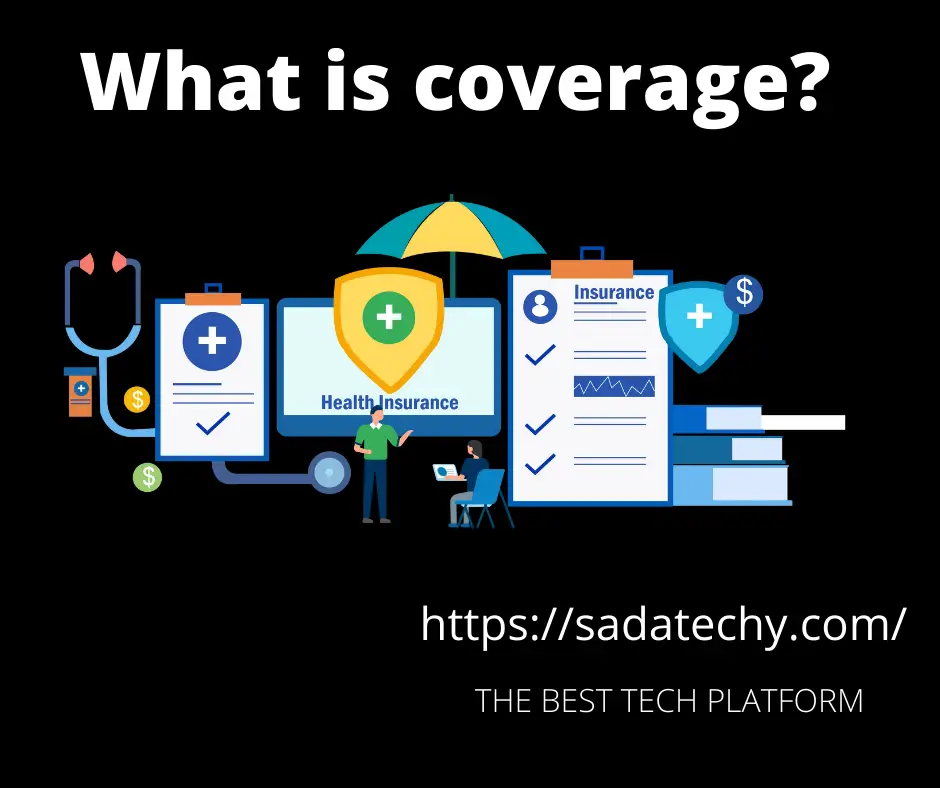When do you need coverage?
Coverage, in the context of information technology, refers to the percentage of time spent testing the final product.
While there are several approaches to measuring coverage, unit testing is the gold standard because it evaluates the efficacy of all existing tests. The percentage form is used for many of them.
Different industries, including advertising, investing, and finance, make use of coverage as well. Coverage and coverage analysis are defined here in their IT context.
Simply put, what does the idea of coverage entail?
In Japanese, the term “coverage rate” literally means “coverage rate,” which is a literal translation of the concept.
The term “coverage,” which can mean either “scope of coverage” or “scope of compensation,” actually refers to the amount of testing that has been performed on the whole software application and which tests have been run under executable conditions.
This is a vital step in ensuring that the quality of your software continues to rise.
Can you explain coverage analysis to me?
Evaluation of coverage is what coverage analysis is all about.
Black box testing verifies that the functionality is as specified, while white box testing verifies that it works as intended by the designer; both are considered to be part of the larger concept of coverage. increase.
Different analysis conditions are used to improve the test’s validity and increase the confidence of the analysis, and appropriate testing is performed for the assurance required.
The context in which it is used alters the meaning.
Even for the same test, different coverage numbers can be obtained depending on the context in which they are used.
However, the overall test’s thoroughness, as measured by metrics like execution coverage (the fraction of test items that ran) and design coverage (the quality of the test design), is just as crucial as the numerical value for each test item.
To determine the software’s comprehensiveness, coverage analyses shift the focus. It’s meant for debugging purposes, but we’ve found that setting conditions with priority in mind makes for much more efficient work.
Coverage’s four main functions in the IT/software industry
Coverage is a metric used in the IT/software industry to evaluate the extent to which a product meets its stated goals.
Coverage is introduced here, and it is also used as a semiconductor term in the information technology field. Step coverage is an indicator of coverage in semiconductors.
Coverage’s primary applications in the IT world are outlined here.
Application of Insurance First, we’ll talk about test coverage.
The percentage of a software test that has been executed is known as “test coverage.”
Code coverage in testing validates the structure, while specification coverage verifies the needs. By running tests, you can use test coverage to locate gaps and holes in the code.
The reliability of the test is context-dependent and thus depends on the criteria used to determine the level of coverage.
In what ways protection is put to use 2: Code coverage
The term “coverage” in the IT world refers to code coverage, which measures the percentage of code that has been tested relative to the total code base.
A typical test’s statement coverage (C0) is equal to the percentage of times the coverage condition is an instruction (instruction coverage), while the branch coverage (C1) is equal to the percentage of times true/false branches are executed.
In this context, code coverage is viewed as a neutral verification metric.
In what ways protection is put to use Third, the scope of coverage
In the context of mobile phones and other forms of wireless communication, “area coverage” refers to the physical region within which signals can be sent and received.
The range of a wireless base station is also known as the call area or coverage area for mobile phones.
You can use it for network systems anywhere Wi-Fi is available. Coverage holes are the places where radio waves can’t reach, so it’s important to avoid leaving any behind when setting up.
In what ways protection is put to use Number Four: Complete Protection
In other words, functional coverage measures how well tests cover requirements (requirements).
Black box testing is the backbone of functional coverage, and there are two main types of tests: specification function testing and user testing. Verification items for specification functions are drawn from relevant standards and specifications and are tested by experts in the field. consists of defining a series of steps and milestones to be reached to succeed.
The two primary forms of test coverage, functional coverage and code coverage, are employed in the context of software testing.
Here are three examples of how coverage is employed in marketing:
The ratio of users to the intended audience is known in marketing as coverage.
It’s displayed as a coverage rate or coverage rate, and it’s calculated from the number of users of products, services, and media to inform future strategies, whether they’re aimed at the entire country or a more specific geographical area.
Advertising strategies on the World Wide Web sometimes make use of coverage metrics as well.
Press coverage of ads
Television, newspapers, and radio all play a role in our advertising mix, as do national and regional radio and television networks, as well as local and regional television and radio stations.
Site coverage displays the percentage of ad impressions that were successfully delivered from Google Adsense. We’re working to make the site more user-friendly by hiding ads that don’t interest you and showing only ads that are relevant to your browsing history and preferences.
In what ways protection is put to use Second, Market Share
Your product’s market share is the percentage of total sales that your company has captured in your target market.
Two types of market share exist absolute market share, which indicates a fixed percentage of sales in a given region, and relative market share, which indicates a fixed percentage of sales in a given industry.
A company’s market share is a useful metric for validating its standing in the industry and developing plans.
In what ways protection is put to use Third: The Business-to-Business Marketing Approach
Coverage can have different connotations in different contexts when discussing B2B marketing strategies.
The term “coverage” is used in the context of a “coverage ratio,” which can vary depending on parameters like the number of companies that have access to the target company’s contact information.
As part of this process, we will also introduce a coverage model for segmenting prospects and developing sales strategies accordingly.
Benefits of Insurance in the Business World

When used by a securities firm versus an international investment bank, the term “coverage” has two distinct connotations in the world of finance and investment.
Coverage is mainly used in the stock market, but not by general banks. “Research and analysis” and “advice” refer to securities firms, while “foreign financial institutions” refers to sales endeavors.
I’ll break down the findings and recommendations for you.
Survey/Analysis
If you want to be covered in the world of finance, you need to do your homework.
Some financial institutions apply the coverage team to all of their salespeople, conducting in-depth analyses of the company’s past and projected performance under the leadership of the coverage team.
Financial institutions use it in a technical sense that has nothing to do with percentages and is entirely different from the meaning used in IT jargon and marketing strategies.
advice
Financial institution protection typically includes expert guidance.
Coverage is sometimes used to refer to a securities firm’s overall corporate activities, including but not limited to the provision of investment advice and information to clients and the execution of those recommendations by the firm’s own research and analysis.
Foreign M&A investment banks often use the term “coverage” to refer to the group responsible for acquiring deals, while “advisory” can refer to the group responsible for providing guidance.
How do we find the most accurate method of measuring coverage?
Using the appropriate test tools for your business is, in IT parlance, an efficient way to measure coverage.
To combine tests theoretically would require a huge amount of man-hours and is therefore unrealistic. Using the appropriate software testing tools will allow you to get the necessary data promptly.
The coverage test should be used in conjunction with other tests for a more thorough evaluation and more effective software development.
Coverage is a concept that can be traced back to coverage.
Coverage is a term that has multiple uses in different fields, including IT (where it means “percentage of tests run”), marketing (where it means “exposure”), and finance.
The word “coverage,” which means “to enclose or protect,” is used in many contexts, including advertising and mobile phone service. Besides research, analysis, and advice, we are also making groundbreaking strides in the financial sector.
Let’s do some coverage analysis and get a handle on the concept of words.
For more details catch us on Facebook


